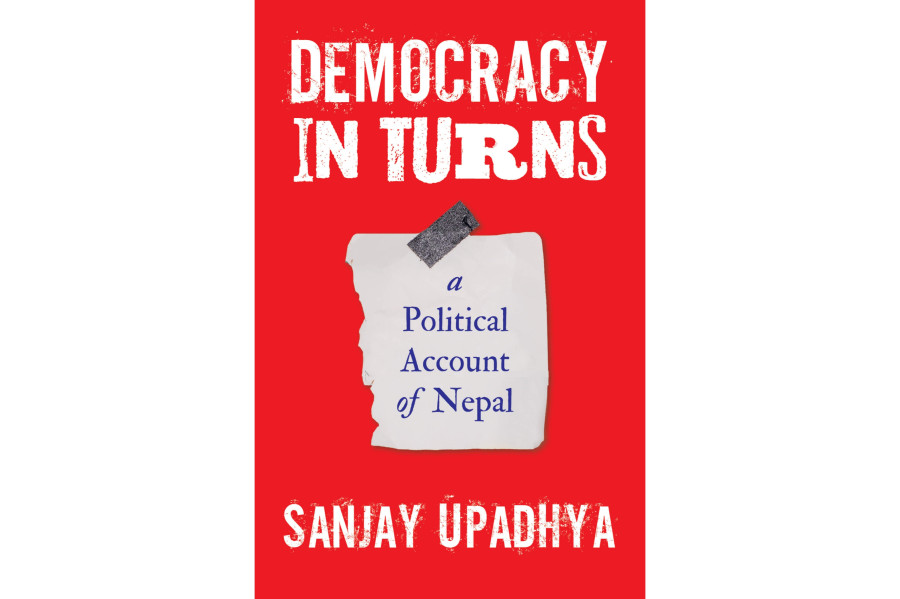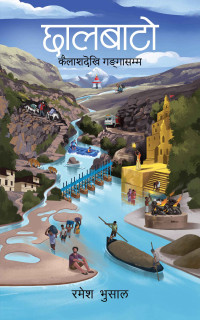Books
Insights into the modern political history of Nepal
Sanjay Upadhya attempts to give readers a thorough overview of modern Nepali history, focusing on the political transformation in his latest book.
Deepak Adhikari
Author and geopolitical analyst Sanjay Upadhya explores Nepal’s complex political landscape in his most recent book, ‘Democracy in Turns: A Political Account of Nepal.’ This is Upadhya’s fifth book. In his earlier works, he tackled Nepal’s political transformation after the end of the Maoist insurgency and the rivalry between China and India in Nepal and wrote about how India adopted British colonial policies vis-à-vis Nepal after its independence from the empire.
A year ago, through the publication of ‘Empowered and Imperiled: Nepal’s Peace Puzzle in Bits and Pieces,’ Upadhya exposed himself as the pseudonymous blogger behind sharp takes on Nepali politics that were published in the popular blog Nepali Netbook, where he wrote under ‘Maila Baje’.
Upadhya attempts to give readers a thorough overview of modern Nepali history, focusing on the political transformation beginning in the 1990s. And like most authors who write about Nepal’s modern history, he begins with the conquest of petty kingdoms by Prithvi Narayan Shah and his armies. When you begin at this historical juncture, you have to narrate the court intrigues and massacres in the palace until the end of the Rana autocracy. The author dutifully paints the period with short brushes.
One admirable quality of ‘Democracy in Turns’ is Upadhya’s presentation of a survey of modern Nepali history, allowing readers to grasp an overview of the country’s political landscape. The title chapter at the end provides a summary of the preceding chapters. The book ends with the Supreme Court’s decision to overturn the parliament dissolution recommended by the Oli government on February 23, 2021. Upadhya has crammed all the significant events of the country’s modern history into 280 pages.
Such an ambitious project is bound to face challenges. Rather than providing new insights or original analysis, the book primarily recycles recent history. While some readers may appreciate the brevity and clarity of the writing style, others might yearn for a more in-depth exploration of the last 30 years of Nepali history.
Upadhya assumes a certain level of familiarity with the inside accounts of recent Nepali history, making it a challenging read for those less versed in the country’s political context. ‘Democracy in Turns’ demands prior knowledge or additional research about these events. Explaining historical events is just as important as chronicling them. The book fails to do this adequately.
One aspect that may disappoint readers is the author’s heavy reliance on international sources such as The New York Times, Time, and The Washington Post. Although these sources provide valuable perspectives, a more extensive inclusion of Nepali language publications would have offered more significant insights. The book may neglect the nuances and complexities of Nepal’s political landscape as experienced by Nepalis because it mostly draws from foreign and English sources. One book that comes to mind for its focus on local sources is ‘People, Politics and Ideology: Democracy and Social Change in Nepal’, which covers the two pro-democracy revolutions of 1950 and 1990.
Nevertheless, ‘Democracy in Turns’ does offer insightful commentary in certain instances. An example is when the author exposes the political parties’ deception: “Most parties acknowledged the political, social and economic grievances behind the movement while in opposition. Once in power, they relied on the reinforcement of police units.” The book captures the fast-paced political transformation during the period between the launch of the Maoist insurgency and the subsequent peace process. This roller-coaster period in Nepal’s recent history deserves a book of its own, given the intensity of the events that unfolded over the decade.
The book occasionally suffers from disjointed sentences that fail to build narrative tension—a common pitfall when attempting to condense a lengthy history into concise passages. Some sections present weighty sentences about consequential moves without adequately explaining their implications.
For example, the book talks about the transition from an autocratic Panchayat regime to constitutional monarchy and multi-party democracy in the 1990s: “[Prime Minister Krishna Prasad] Bhattarai then turned to dismantle the structure of the Panchayat regime to facilitate the functioning of the interim government.” The book provides no further elaboration on this, swiftly describing Bhattarai’s subsequent challenges of holding elections and drafting a constitution. The book also seems to display a bias in favour of the Shah monarchy, portraying it as benign while blaming its demise on the political parties and their dysfunction.
The book highlights the Maoist duplicity during the war and their dexterity at playing off power centres in Kathmandu and New Delhi. In contrast, the portrayal of King Gyanendra’s unconstitutional move is watered down, failing to adequately demonstrate the implications of what Indian journalist Siddharth Varadarajan defined as a “monumental folly.”
Here is what happened: The Royal Takeover led to a crackdown on civil spaces, including news media. Gyandendra eschewed anti-corruption agencies such as CIAA and set up an unconstitutional body, appointing his henchmen. The goal was not to crack down on corruption but to weaken the pro-democracy movement. He relied on a coterie of outdated politicians (like Tulsi Giri) who weren’t in sync with changing times.
Despite its limitations, ‘Democracy in Turns’ is a valuable primer on Nepal’s recent political history. It offers readers a starting point from which they can explore and deepen their understanding of the country’s democratic journey. Upadhya gives readers a foundation on which to build further knowledge by summarising the important events.
—
Democracy in Turns: A Political Account of Nepal
Author: Sanjay Upadhya
Year: 2023
Publisher: FinePrint




 8.12°C Kathmandu
8.12°C Kathmandu










